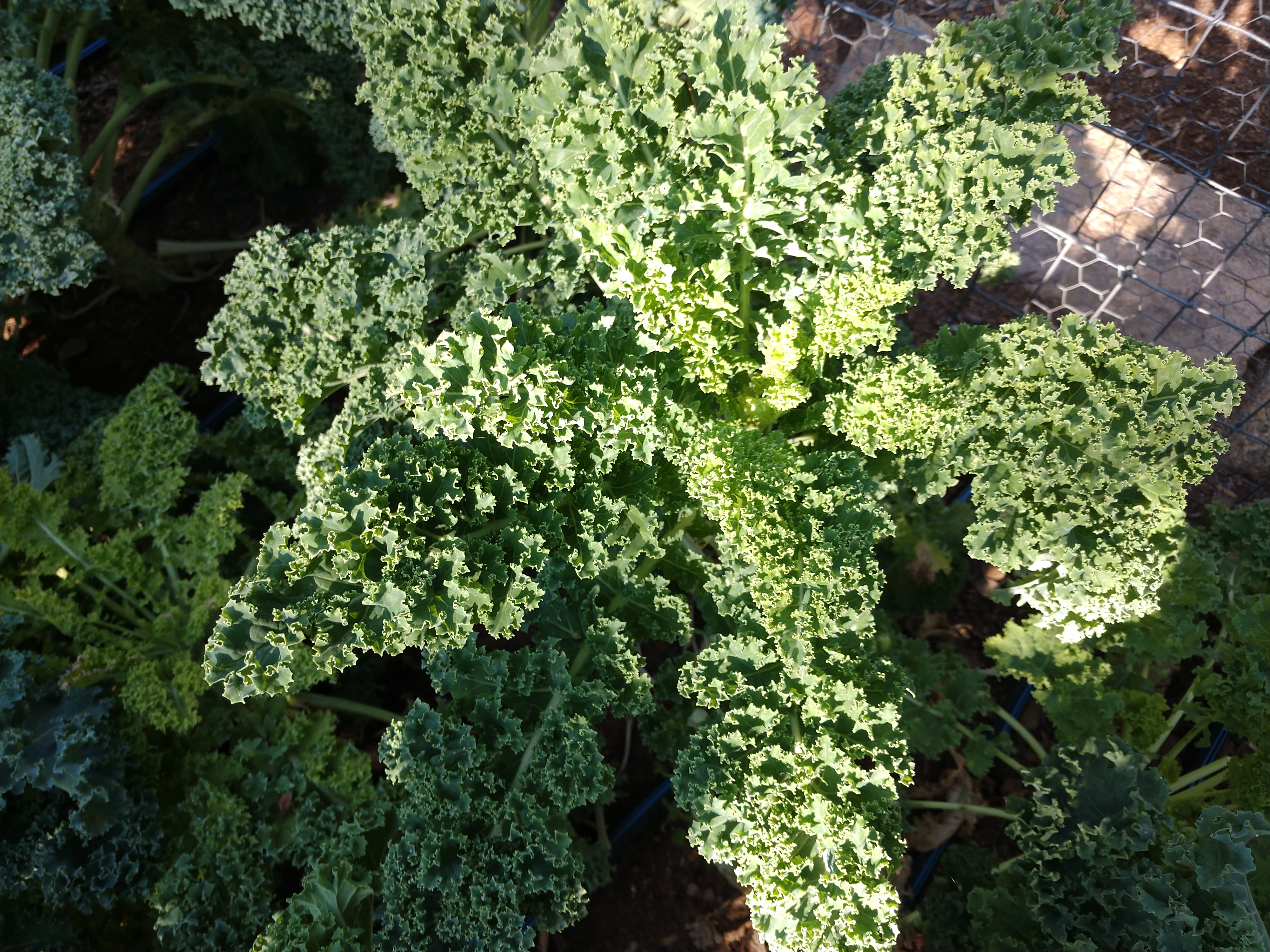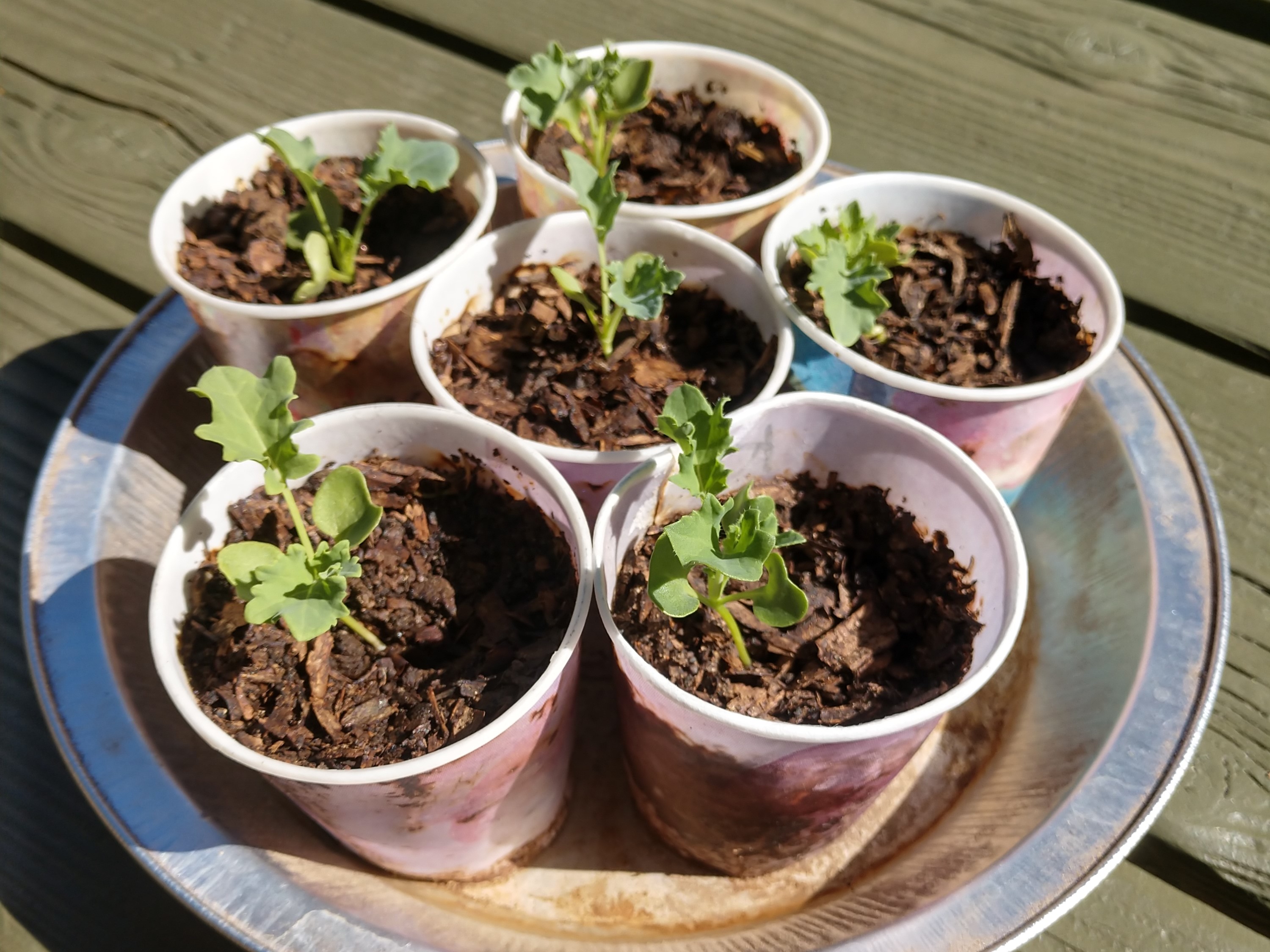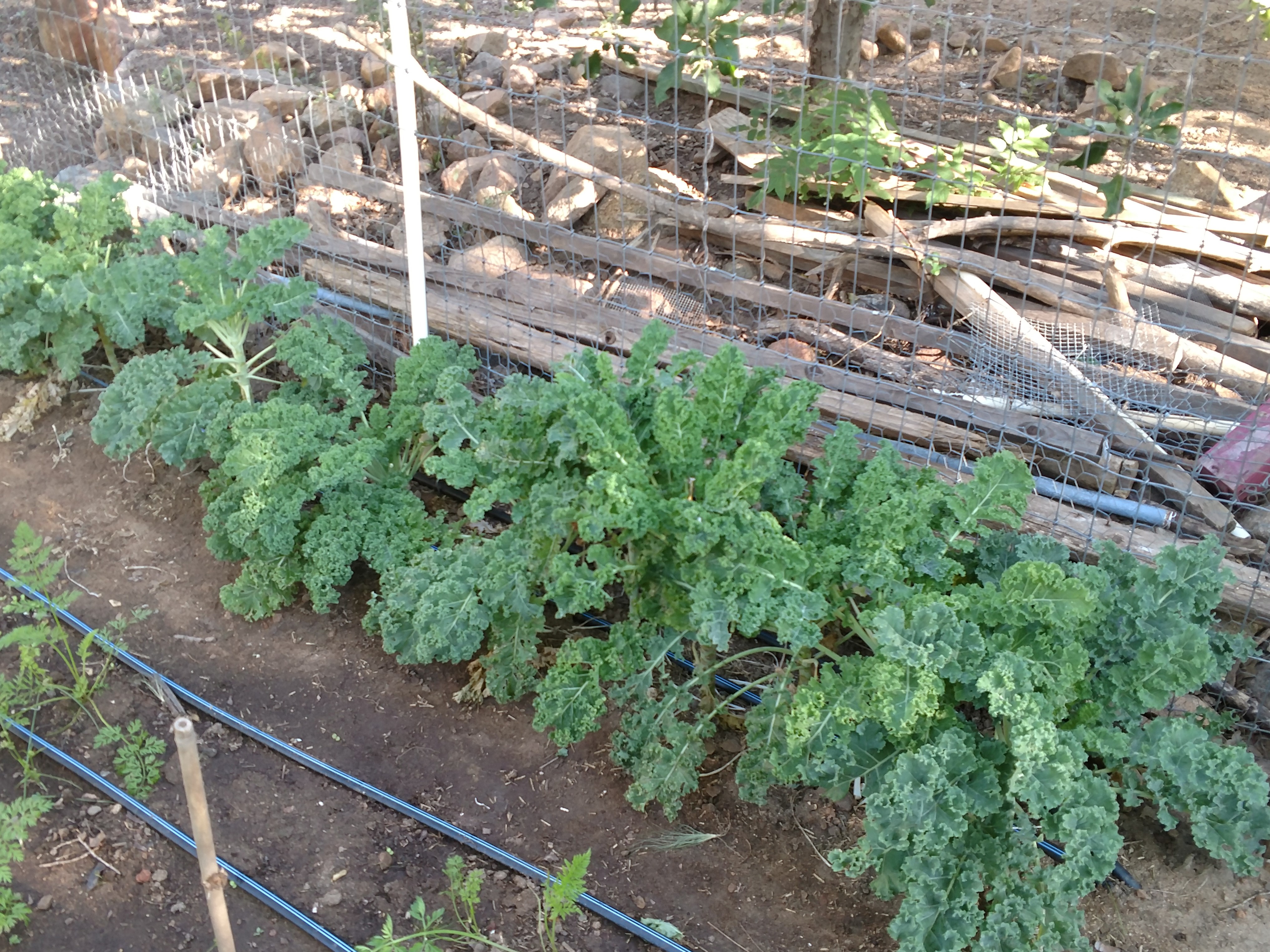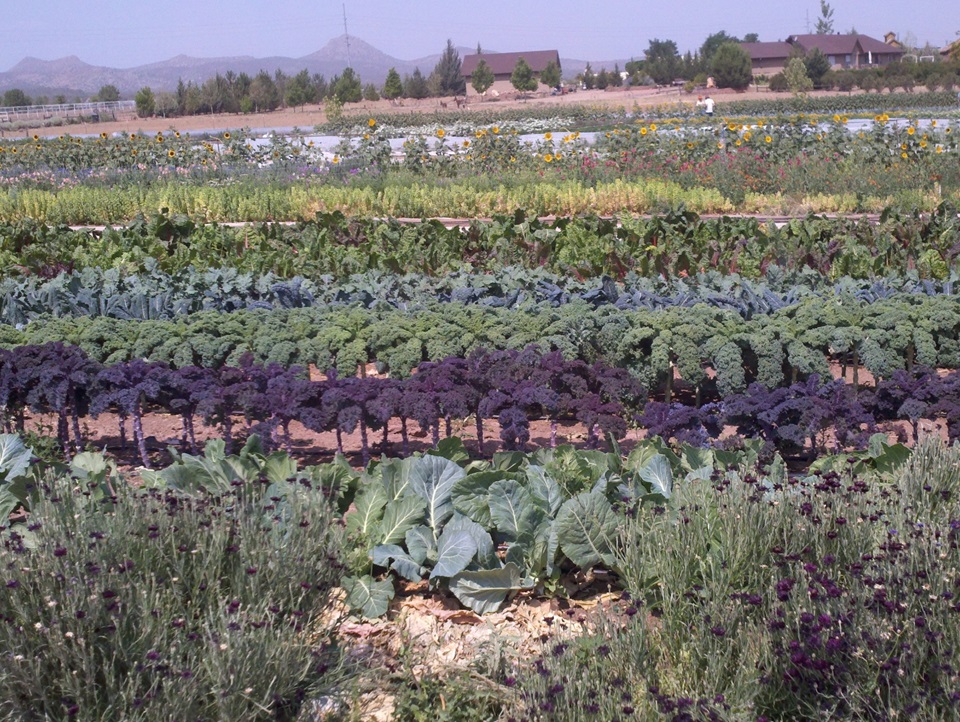 Growing Kale - December 9, 2020 Jeff Schalau, Agent, Agriculture & Natural Resources University of Arizona Cooperative Extension, Yavapai County With the pandemic-induced increase in home gardening, people should consider growing more cool season crops. Kale (Brassica oleracea) is a cool season biennial in the mustard family. It is very closely related to cabbage and very easy to grow. Kale is also high in vitamins A and C, a good source of calcium and iron, and considered one of the most nutritious vegetables. It can be prepared in many ways: eaten raw on salads, steamed, sautéed, used in smoothies, cooked in soups and stews, and more. Kale was first cultivated in the eastern Mediterranean and Asia Minor beginning in 2000 B.C. and was used as medicinal food source and to treat bowel ailments. By the 13th century, heading types of cabbages were grown in Western Europe and by the 14th century, both heading cabbages and loose-leaf kale were being grown in England. Russian kale was introduced into Canada, and then into the United States, by Russian traders in the 19th century. Twenty years ago, kale was primarily used in the United States as an ornamental, but it has become more popular as an edible vegetable in recent years due to its nutritional value. Kale performs best in fertile, well-drained soil rich in organic matter. Most soils in Arizona are suitable for kale production. Soil should be prepared as it would be for any vegetable crop: incorporate up to 2-4 inches of well composted organic matter and apply a complete fertilizer (about two pounds of 10-10-10 fertilizer or equivalent amount of organic fertilizer) per 100 square feet. Alfalfa cubes can also be used as fertilizer (as described in March 29, 2017 Backyard Gardener). Additional light applications of nitrogen can also be made midseason (I often add a few more alfalfa cubes). Kale can be grown from seed or transplants. Seeds should be planted ¼-¾ inch deep and thinned when plants have 3-4 true leaves. Plants removed at thinning can be transplanted to adjacent areas. Transplants will provide the earlier harvest. Transplants should have 4-6 mature leaves and a well-developed root system before planting. Five to six weeks are required to grow transplants to this size. I prefer direct seeding, thinned to 12 to 18-inch spacing (depending on size of mature plants – dwarf varieties can grow on a 12-inch spacing) with rows 18 to 24 inches apart. Kale grows best when temperatures do not exceed 75°F. However, young plants are not seriously damaged by temperatures down to 25°F. Mature plants are extremely hardy and can withstand very cold temperatures without damage. References say that transplants and direct seeded kale should be planted 4-5 weeks before the last frost-free date for the growing area. However, I have good results direct seeding it year-round in Prescott, AZ (USDA Hardiness Zone 7b). It is just slower to germinate and grow once winter arrives. High summer temperatures reduce growth, decrease quality, and may cause bitter or off flavors to develop. This year, aphids were becoming an issue on mature plants in September and October. Irrigate kale deeply and infrequently while trying to maintain even soil moisture. Use drip irrigation if possible to conserve water. Applying mulch around the plant also helps conserve soil moisture and reduce weed growth. Moisture fluctuations may cause leaves to become tough and develop off flavors. Kale should be harvested when the leaves reach full size. Older leaves are generally stripped off the plants first allowing the young leaves to continue to grow. Frosts help improve the flavor of the fall planted crop. Kale can be stored for 2-3 weeks at 32°F and 95% relative humidity. Many gardeners leave kale growing in the garden throughout the winter. It can also be planted in fall if season extension techniques (low tunnels, floating row cover, walls of water, etc.) are used. I grow ‘Dwarf Blue Curled’ kale due to its smaller size and tender leaves. When planted in mid-March, it produces all summer long and was still producing in October. Fall plantings will grow and produce through the winter months. Being a biennial, it does not flower in the first year. Staggered plantings ensure availability year-round. Consider growing some kale in your garden! It is a stout, hardy green that tolerates cold and warm temperatures. See below for photos and additional resources. You can follow the Backyard Gardener on Twitter – use the link on the BYG website. If you have other gardening questions, email the Master Gardener Help Desk in Prescott (prescottmg@gmail.com) or Camp Verde (verdevalleymg@gmail.com) and be sure to include your name, location, and phone number. Find past Backyard Gardener columns or provide feedback at the Backyard Gardener web site: https://cals.arizona.edu/yavapai/anr/hort/byg/. Images  Close-up of 'Dwarf Blue Curled' kale growing in Prescott, Arizona (photo by Jeff Schalau, University of Arizona).
Close-up of 'Dwarf Blue Curled' kale growing in Prescott, Arizona (photo by Jeff Schalau, University of Arizona). Last summer I grew a few kale transplants to fill in a few openings (photo by Jeff Schalau, University of Arizona).
Last summer I grew a few kale transplants to fill in a few openings (photo by Jeff Schalau, University of Arizona). A short row of kale can provide two people with good supply as leaves are picked singly and regrowth occurs rapidly (photo by Jeff Schalau, University of Arizona).
A short row of kale can provide two people with good supply as leaves are picked singly and regrowth occurs rapidly (photo by Jeff Schalau, University of Arizona). Several varieties of kale are growing in the middle of this photo (photo by Jeff Schalau, University of Arizona).
Several varieties of kale are growing in the middle of this photo (photo by Jeff Schalau, University of Arizona).Additional Resources Growing Kale, Utah State University Extension extension.usu.edu/yardandgarden/vegetables/kale Kale, Colorado State University Extension planttalk.colostate.edu/topics/vegetables/1821-kale/ How to Grow Kale and Collards, Michigan State University Extension www.canr.msu.edu/resources/how_to_grow_kale_and_collards |